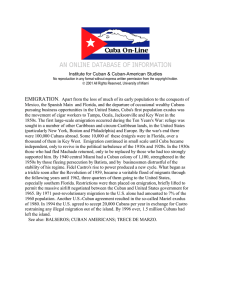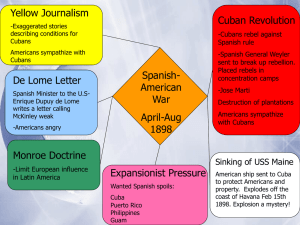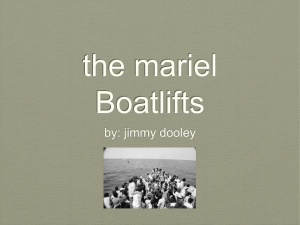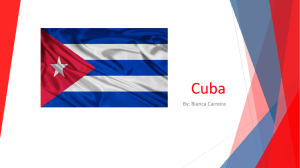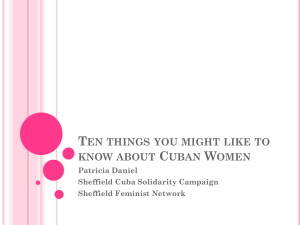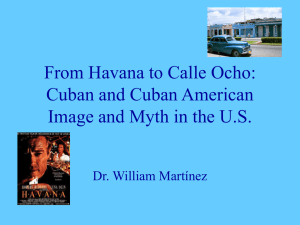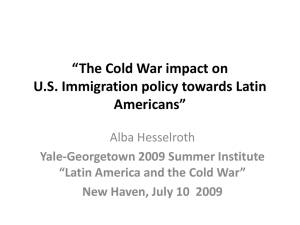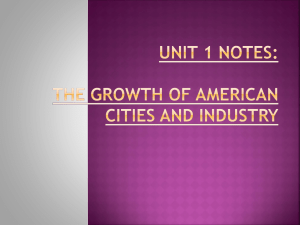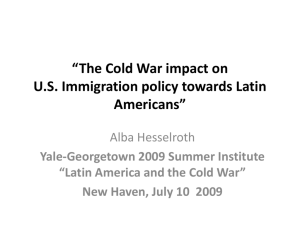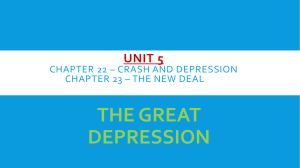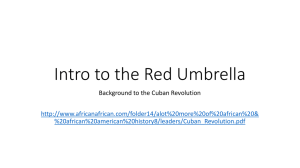Change and Cuban-American Politics
advertisement
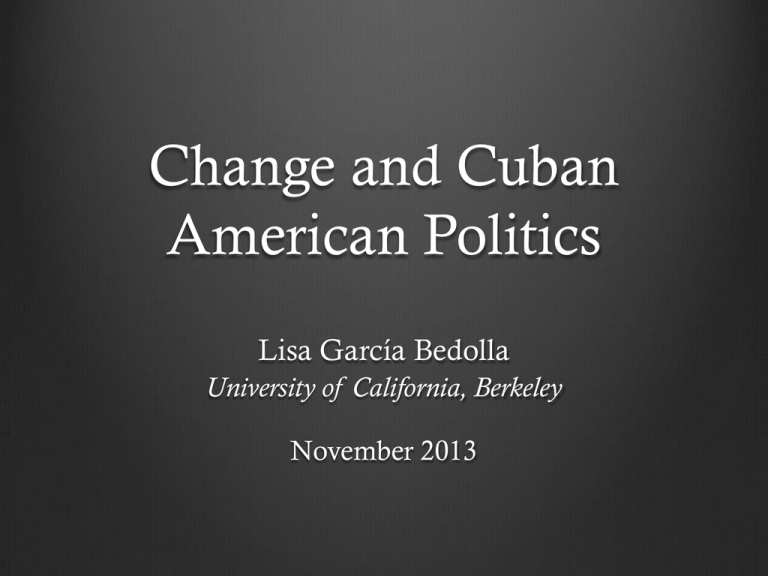
Change and Cuban American Politics Lisa García Bedolla University of California, Berkeley November 2013 Changing Population: Foreign Born About 59% of Cubans in the United States are foreign born 48% of those entered the United States before 1990 33% have entered the U.S since 2000 2002-2011: 327,008 Cubans became legal permanent residents More than in any other decade since 1960 Have different early socialization experiences Different attitudes towards relations with the island Unclear what will happen now that travel restrictions have been lifted Changing Population and Voting Post-Mariel immigrants have lower levels of citizenship and voting Newer immigrants even less likely to participate, given citizenship and SES status Voters now disproportionately from earlier waves Likely to change over time Likely to change partisan/issue framing of participation Post-Mariel v. Pre-Mariel Attitudes Post-Mariel Cubans almost twice as likely to support lifting the embargo Post-Mariel Cubans twenty percentage points more in support of lifting the travel ban Post-Mariel Cubans more two and a half times as likely to identify as “strong Democrat” Differences remain after controlling for education and income Changing Attitudes: U.S. Born Second generation Cuban Americans less Republican and more supportive of normalized relations with Cuba than their parents (or grandparents) About seven percentage points more supportive of lifting the embargo and the travel ban About three percentage points more likely to identify as “strong Democrat” Different from their parents, but differences not as great as between pre and post-Mariel Context and Party Identification Florida Cubans 90% 80% 70% 60% 50% 40% 30% 20% 10% 0% Non-Florida Cubans 60% 81% 56% 50% 44% 40% 30% 19% 20% 10% 0% Republican Democrat SOURCE: 2006 Latino National Survey Republican Democrat Political Ideology and Party Identification Cuban political attitudes do not map neatly onto Republican party platform Believe in strong government, including welfare provision Estimate Cuban/Haitian entrants received $322 million in federal/state support in 2008 Only pro-choice Latino group Religiosity lower, as measured by times attending services per week Changes on the Island Travel restrictions lifted (with limitations) in Jan 2013 Changes ability of Cubans to leave Makes it easier for those who left to return, for visits or to stay Economic changes continuing, in fits and starts Raúl leaving presidency in 2018 New generation will be taking power Unclear what that will mean for on the island, in the short and long terms Will also mean changes for U.S. community Future of Cuban American Politics Exile was a unique experience, not to be repeated Led to common enemy, collective purpose Changes on the island will lead to changes in Miami Migration patterns changing Issue focus changing Community’s demographic make-up changing All likely will shift Cuban American politics Towards what remains to be seen Geographic Dispersion Florida California New Jersey New York Texas United States Population 1,213,438 88,607 83,362 70,803 46,541 1,785,547 Percent of Total 68% 5% 4.7% 4% 2.6% 100%
